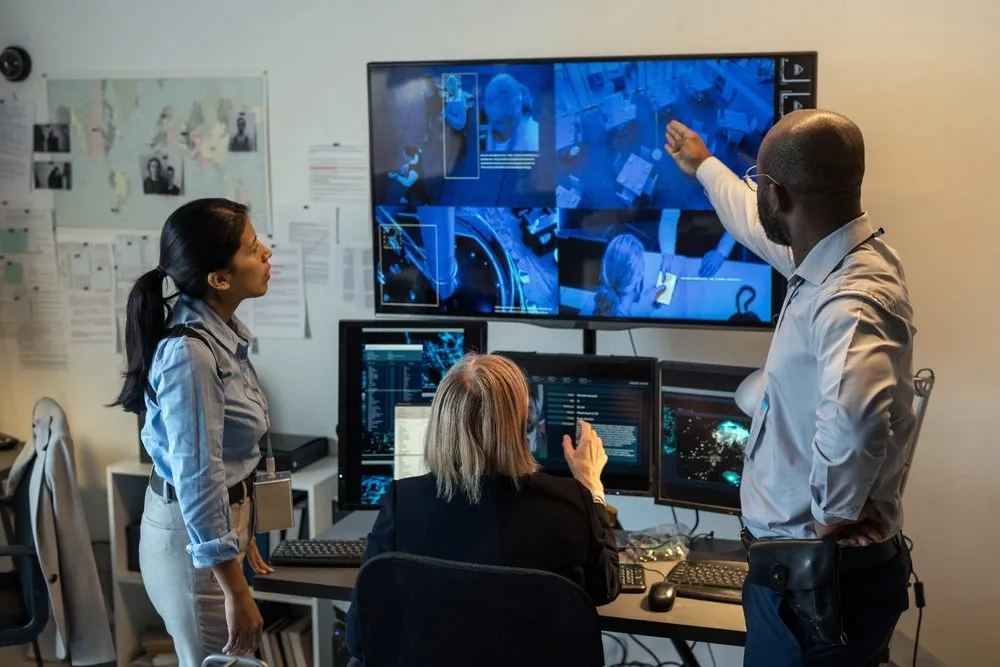But even after they’ve successfully submitted a case to prosecution and an organization member is imprisoned, an investigator’s challenges aren’t over—instead, they morph. There are crimes committed in prison, and a correctional investigator needs to use similar tools that investigators used to build the initial RICO case in order to keep their prison safe and under control.
According to the U.S Department of Justice (DOJ), criminal enterprises within prisons range from highly structured (Aryan Brotherhood and Nuestra Familia) to loosely formalized (Mexican Mafia). Often structured along racial and ethnic lines, they represent an important link between drug trafficking organizations and criminal organizations on the street, brokering the delivery of drugs and impacting the safety and welfare of both inmates and employees within the correctional institution where they operate.
Challenges with Investigating Crimes Committed in Prison
Given the overall impact of crimes committed in prison, it is relevant to note the unique challenges investigators face with these types of cases. On the outside, for example, investigators can sometimes bargain to keep confidential informants (CIs) out of prison or offer financial compensation in exchange for successful prosecutions.
On the inside, CIs have already been sentenced, meaning that actionable intelligence can be mired in half-truths and outright fabrications when self-interests inevitably shift. Why might they shift? On a superficial level, a potential CI has far less to lose. Yet there is far more to the story. Upon entering prison, every inmate is responsible for protecting their own self-interest, from ensuring personal safety to protecting and providing for the interests of one’s family and associates.
On a big-picture level, prisons functionally serve as two-way streets. Information and influence pass easily in and out of the prison walls and it is the job of investigators to capture and analyze as much of that information as possible. The physical conditions of prison also produce a unique context. In a correctional facility, space is limited, meaning rival organizations are forced to work in close proximity to one another in a constant battle for influence and resources. In the face of potentially lethal violence, intelligence is critical, not only in taking down criminal organizations but also in terms of protecting the health and welfare of both inmates and employees within the prison.
Meeting the Needs of Correctional Investigators
Given the high-stakes work of ferreting out gang activity and managing investigations in correctional institutions, proper collection—and protection—of intelligence that helps move cases forward is paramount. In practice, this means complying with applicable laws and security standards to protect the privacy of criminal intelligence and investigative data submitted, stored, and disseminated by their system.
This is especially true when it comes to working with confidential informants (CIs), also known as prison informants, who can provide vital information on prison-based criminal enterprises and their members. In addition to tracking their activities and status, investigators are obligated under federal law to ensure the utmost confidentiality of CI dossiers in order to protect both their identity and safety.
To meet the needs of correctional investigators, CaseBuilder™ adheres to Criminal Justice Information System (CJIS) security policies as well as US Code 28-CFR Part 23 regulations within its proprietary Confidential Informant Management. Rigorous privacy standards are maintained by isolating data and inserting strict controls, including authentication, encryption, and the creation of an audit trail that documents all activities relating to user access and modification of data within the system. Additionally, CaseBuilder allows a correctional investigator to selectively publish particular documents that are suitable for disclosure and track why the documents were disseminated, as well as the recipient’s right to know.

As with any investigation into organized crime, the steps needed to build a successful case are rigorous. In addition to documenting their presence, investigators must build a comprehensive list of individuals involved, from ring leaders down to mid-level associates and foot soldiers, while also meticulously tracking their activities and influence. With SoundThinking™’s Criminal Enterprise Management features, correctional investigators can not only keep track of each organization’s members and their families but also track affiliates and known rivals, which can help investigators understand both the organization’s span of influence and the ecosystem in which they operate.
The Big Picture
As mentioned previously, prisons are functionally two-way streets and it is absolutely critical to collect and analyze as much information on criminal enterprises as possible. Consider the all-too-common discovery of smuggled cell phones in a single cell block. As a solitary piece of evidence, it would be difficult to build much of a case. Now add in recent visits to the prison by family members, a host of recorded phone calls, a recent escalation in violent incidents in the prison, and video surveillance of prison guards assigned to that cell block.
With CaseBuilder, potential intelligence can be viewed (and vetted) alongside other data, including video clips, documented criminal incidents, and even the timing of guard patrols. Equipped with advanced analytics, CaseBuilder makes the most hidden patterns visible by visualizing linkages and detecting relationships between people, places, and evidence—all in a single comprehensive case folder.
Moving cases forward also requires a fair bit of project management. This is particularly true given the inherent complexity of building cases against criminal enterprise and it includes assigning cases to investigators, tracking complex case details, utilizing to-do lists, and uploading video evidence. Collaboration is also critical, not only between investigators within the correctional facility but to investigators on the outside who may be able to provide actionable insights on members who have since been sentenced. Investigative supervisors also have a key role to play, from monitoring caseloads to tracking investigative progress and closure rates.
Just like RICO cases built on the outside, investigations into criminal enterprise within prisons need to be systematic, methodical, and cohesive. Collaboration is key, and in the face of challenges associated with assessing actionable intelligence to maintain the safety of both inmates and correctional employees, leveraging an all-in-one case management system is critical to building success and bringing down criminal organizations.




